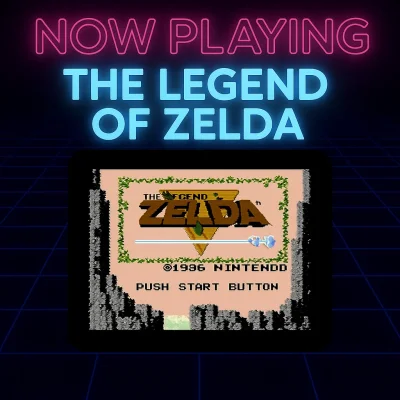Pete
Mr. Eighties
- Apr 29, 2023
- 13,854
- 559
Platform: NES
Developer: Nintendo R&D4
Publisher: Nintendo
Step into the kingdom of Hyrule and begin a quest that helped define an entire generation of gaming. The Legend of Zelda launched in 1986 and delivered something revolutionary for its time—an open world filled with danger, discovery, and mystery. You played as Link, armed with only a wooden sword and a sense of direction, on a mission to recover the pieces of the Triforce and rescue Princess Zelda from the evil Ganon.
Unlike most games of the era, Zelda encouraged exploration. Players had to uncover secrets, solve dungeon puzzles, and upgrade their gear while navigating a world that felt alive and unpredictable. It was nonlinear by design, which made every player’s path slightly different.
The cartridge featured a battery-powered save function, one of the first of its kind, allowing players to preserve their progress in a long adventure. From its memorable music to its hidden rooms and cryptic clues, Zelda quickly became one of the most iconic titles on the NES.
Fun fact: The Legend of Zelda was inspired by creator Shigeru Miyamoto’s childhood experiences of exploring caves, forests, and lakes near his hometown in Japan.
Developer: Nintendo R&D4
Publisher: Nintendo
Step into the kingdom of Hyrule and begin a quest that helped define an entire generation of gaming. The Legend of Zelda launched in 1986 and delivered something revolutionary for its time—an open world filled with danger, discovery, and mystery. You played as Link, armed with only a wooden sword and a sense of direction, on a mission to recover the pieces of the Triforce and rescue Princess Zelda from the evil Ganon.
Unlike most games of the era, Zelda encouraged exploration. Players had to uncover secrets, solve dungeon puzzles, and upgrade their gear while navigating a world that felt alive and unpredictable. It was nonlinear by design, which made every player’s path slightly different.
The cartridge featured a battery-powered save function, one of the first of its kind, allowing players to preserve their progress in a long adventure. From its memorable music to its hidden rooms and cryptic clues, Zelda quickly became one of the most iconic titles on the NES.
Fun fact: The Legend of Zelda was inspired by creator Shigeru Miyamoto’s childhood experiences of exploring caves, forests, and lakes near his hometown in Japan.











